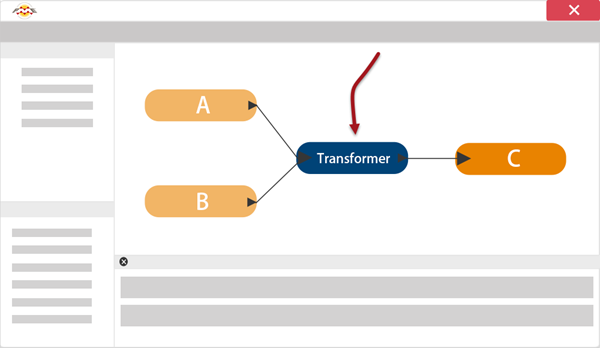What is Data Transformation?
Data Transformation is FME’s ability to manipulate data during a data translation, even to the extent of having an output greater than the sum of the inputs! The transformation step occurs during the process of format translation. Data transformation is important to ensure that key elements of a dataset are preserved.

Data Transformation Types
Data transformation can be subdivided into two distinct types: Structural Transformation and Content Transformation.
Structural Transformation
Structural transformation is perhaps better called ‘reorganization'. It refers to FME's ability to channel data from source to destination in an almost infinite number of arrangements.
This includes the ability to merge data (as in the image above), divide data, re-order data, and define custom data structures. This includes the ability to merge data (as in the image above), divide data, re-order data, edit the name of attributes, and define custom data structures.
Transforming the structure of a dataset is carried out by manipulating its schema, or structure.
Content Transformation
Content transformation is perhaps better called ‘revision.' It refers to the ability to alter the content of a dataset.
Manipulating a feature's geometry or calculating new attribute values is the best example of how FME can transform content.
Content transformation can take place independently or alongside structural transformation.
| Mr Flibble says... |
|
Mr. Flibble - certified FME jester - here to entertain you. Here's a riddle, but can you solve it?
The most common format translation defined with FME is from Esri Shapefile to which format? 1. Esri Geodatabase 2. AutoCAD DXF/DWG 3. Google KML 4. Esri Shapefile If you're in a class, have a group vote! |